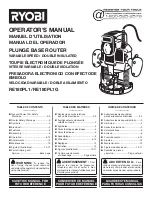
- 37 -
ISP:
Internet Service Provider. An ISP is a business that provides connectivity to the Internet for
individuals and other businesses or organizations.
LAN:
Local Area Network. A LAN is a group of computers and devices connected together in a
relatively small area (such as a house or an office). Your home network is considered a LAN.
MAC Address:
MAC stands for Media Access Control. A MAC address is the hardware address
of a device connected to a network. The MAC address is a unique identifier for a device with an
Ethernet interface. It is comprised of two parts: 3 bytes of data that corresponds to the
Manufacturer ID (unique for each manufacturer), plus 3 bytes that are often used as the product’s
serial number.
NAT:
Network Address Translation. This process allows all of the computers on your home
network to use one IP address. Using the broadband router’s NAT capability, you can access the
Internet from any computer on your home network without having to purchase more IP addresses
from your ISP.
Port:
Network Clients (LAN PC) uses port numbers to distinguish one network
application/protocol over another. Below is a list of common applications and protocol/port
numbers:
Application Protocol
Port
Number
Telnet TCP
23
FTP TCP
21
SMTP TCP
25
POP3 TCP
110
H.323 TCP
1720
SNMP UCP
161
SNMP Trap
UDP
162
HTTP TCP
80
PPTP TCP
1723
PC Anywhere TCP
5631
PC Anywhere UDP
5632
PPPoE:
Point-to-Point Protocol over Ethernet. Point-to-Point Protocol is a secure data
transmission method originally created for dial-up connections; PPPoE is for Ethernet
connections.
PPPoE
relies on two widely accepted standards, Ethernet and the Point-to-Point
Protocol. It is a communications protocol for transmitting information over Ethernet between
different manufacturers
Protocol:
A protocol is a set of rules for interaction agreed upon between multiple parties so that
when they interface with each other based on such a protocol, the interpretation of their behavior
is well defined and can be made objectively, without confusion or misunderstanding.
Router:
A router is an intelligent network device that forwards packets between different
networks based on network layer address information such as IP addresses.
Subnet Mask:
A subnet mask, which may be a part of the TCP/IP information provided by your
ISP, is a set of four numbers (e.g. 255.255.255.0) configured like an IP address. It is used to


































